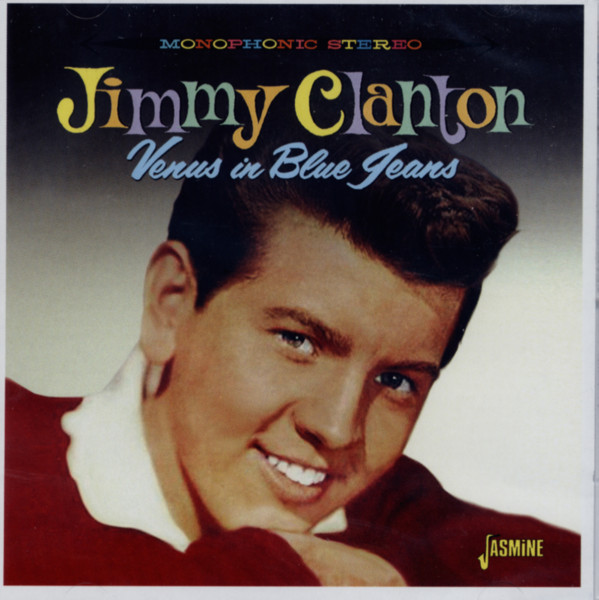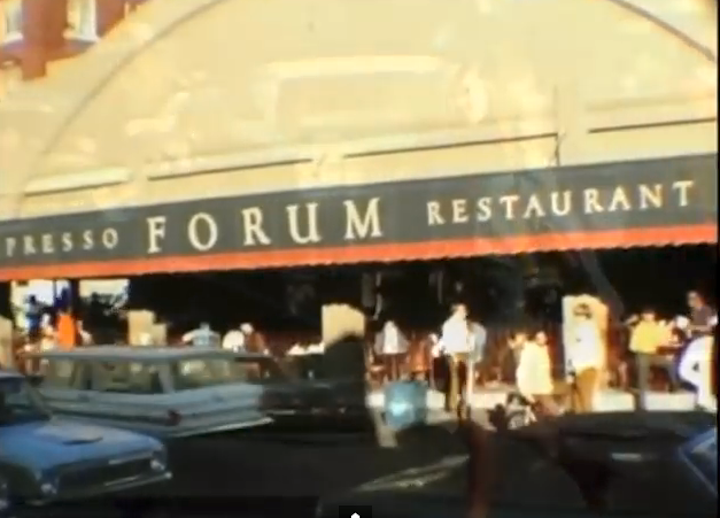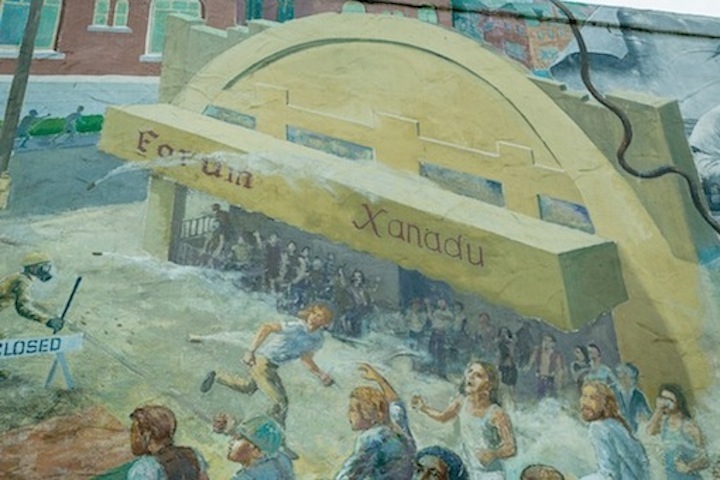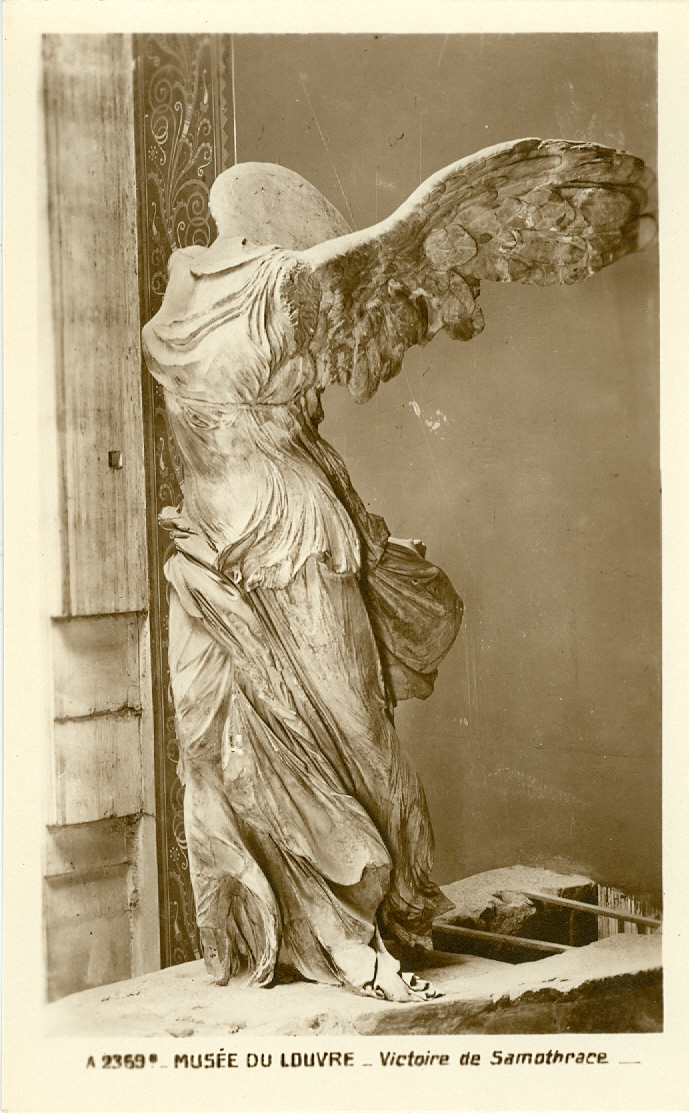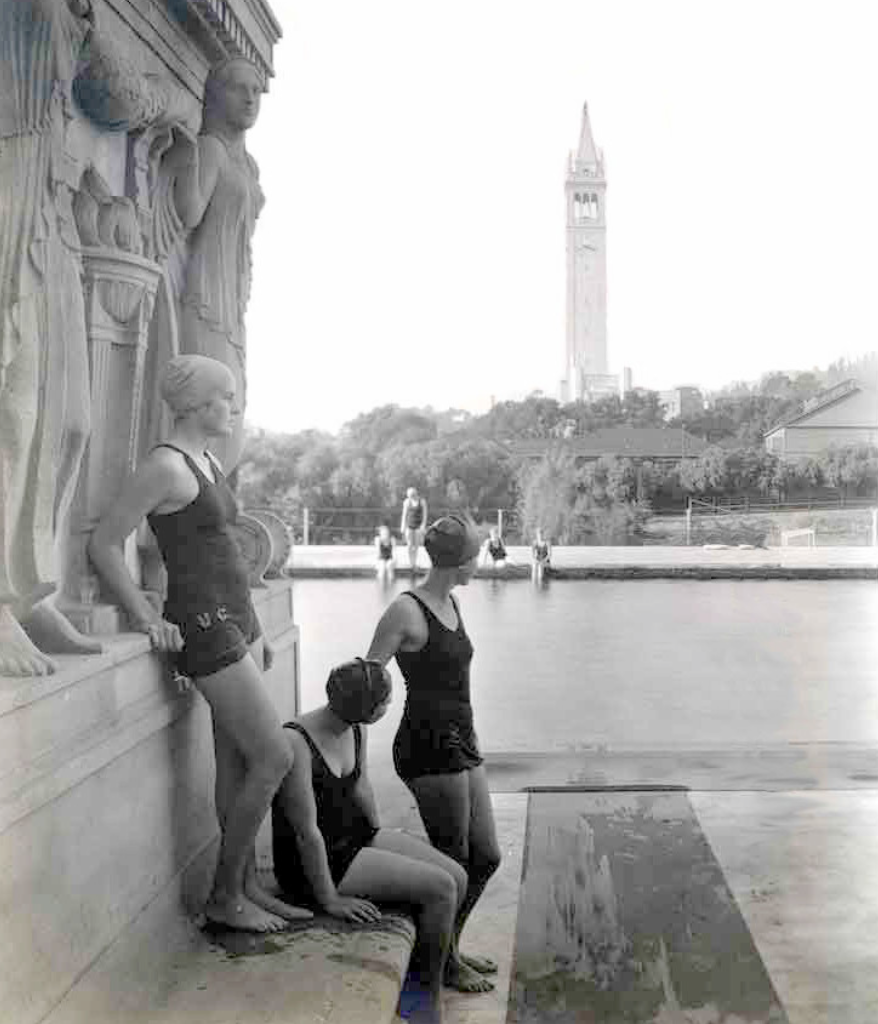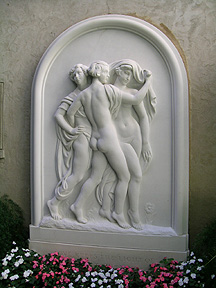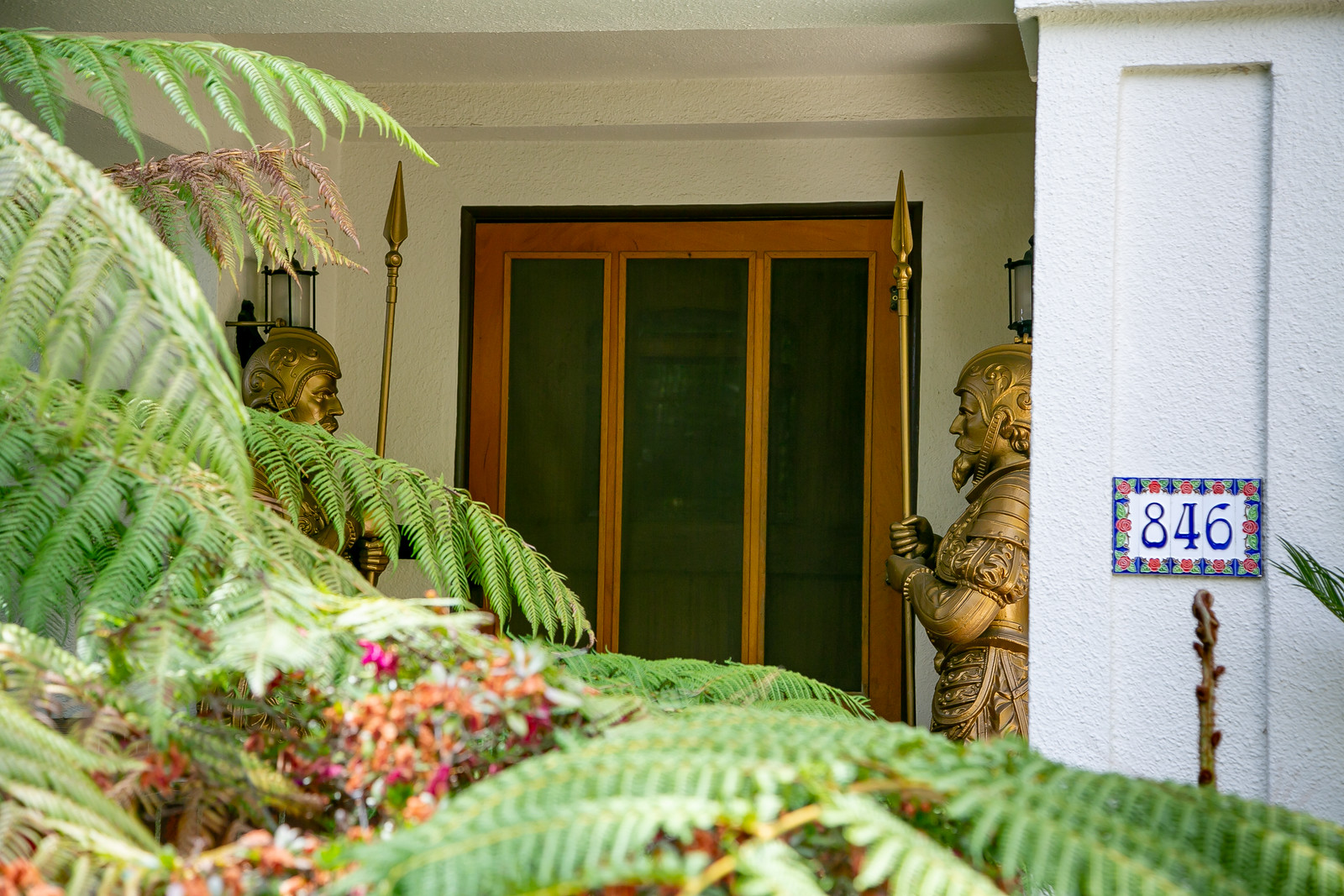I have struggled with the central organizing theme of this post. I started with the wonders of the world, in large part because it gave me an excuse to link to the song Venus in Blue Jeans with “They say there’re seven wonders in the world/ But what they say is out of date / There’s more than seven wonders in the world / I just met number eight….”
Howard Greenfield and Jack Keller wrote the song. The real-life “Venus” was actress Eileen Berner, whom Keller was dating at the time. My memory of the song is associated with choir practice on Friday afternoons in the fall of 1962 at the Church of the Redeemer. I was in sixth grade, which we called A Form. I think that my association is linked to a from-a-great-distance crush on an older girl in the choir.
*Venus in Blue Jeans was released in 1962. It was one of the first 45’s that I bought. Others included Cindy’s Birthday by Johnny Crawford, Johnny Get Angry by Joanie Sommers, Roses are Red by Bobby Vinton, Walk Like a Man by the Four Seasons, and Patches by Dickie Lee. The first two albums I bought were Duke of Earl by Gene Chandler and The Lion Sleeps Tonight by the Tokens. I am not proud of most of the singles but am okay with Johnny Get Angry.
I played them on my inexpensive mono record player from E. J. Korvettes.
The Seven Wonders of the World were in the end too limiting for the post, so I evolved into a collection of images of more or less ancient times found in Berkeley today.
I am starting Ancient Berkeley with Troy. The Berkeley Troy is not a powerful image, but it leaves us with the promise that things will get better. Plus – some good ancient Troy images.
Troy was a city in the far northwest of Asia Minor, now known as Anatolia in modern Turkey, just south of the southwest mouth of the Dardanelles strait and northwest of Mount Ida.
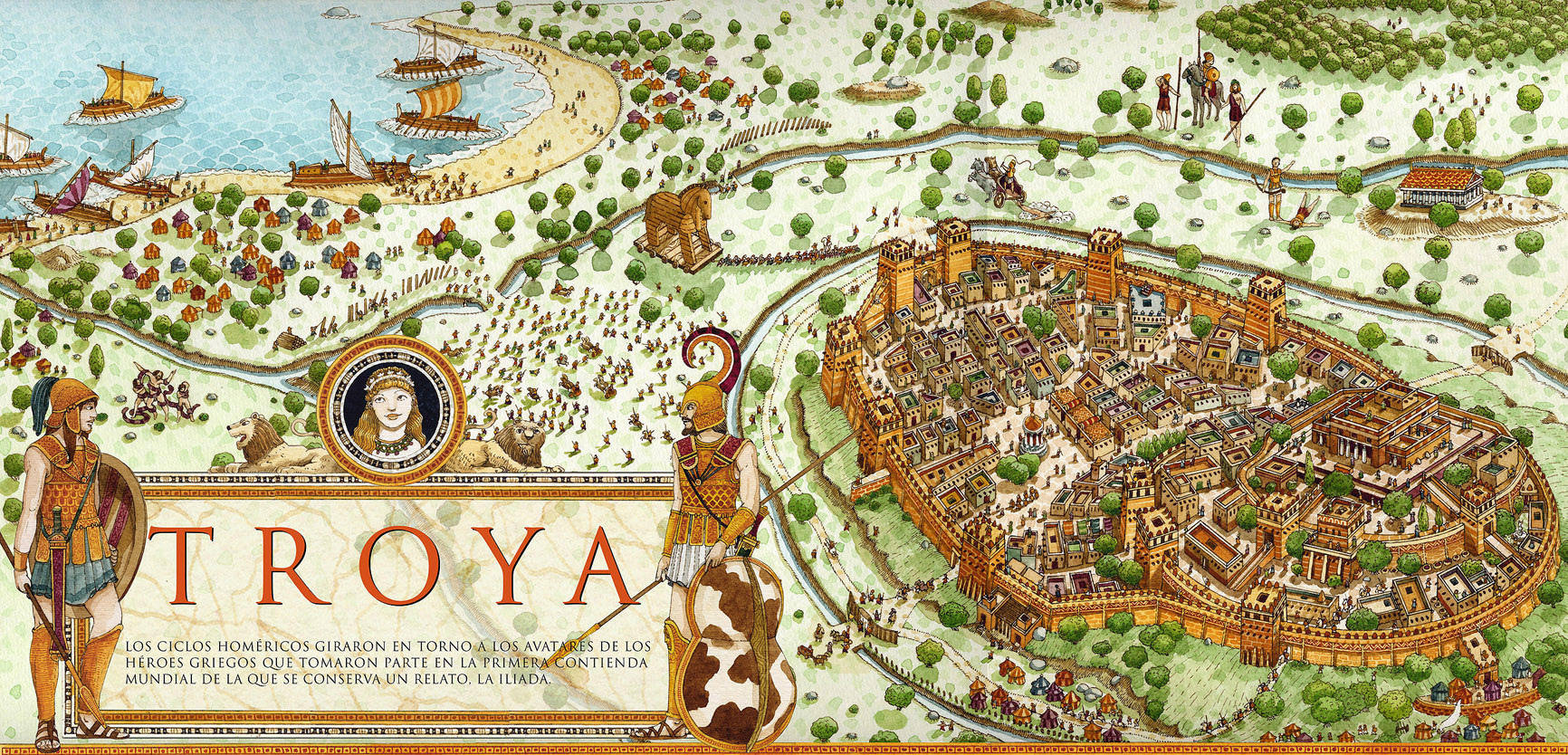 The present-day location is known as Hisarlik. It was the setting of the Trojan War.
The present-day location is known as Hisarlik. It was the setting of the Trojan War.
In Greek mythology, the Trojan War was waged against the city of Troy by the Greeks after Paris of Troy took Helen from her husband Menelaus, king of Sparta. The war is one of the most important events in Greek mythology.
The Trojan Horse was the subterfuge that the Greeks used to enter Troy and win the war against Troy after a fruitless 10-year siege. The main ancient source for the story is the Aeneid of Virgil. The event is also referred to in Homer’s Odyssey.
Troy is a Greek restaurant at 1843 Solano, between Colusa and The Alameda. Kind of rubbing it in, though, serving Greek food at a restaurant called Troy, no?
While in the general area, let’s consider the Forum.
The Roman Forum (Forum Romanum or Forum Magnum) was the center of day-to-day life in ancient Rome: the site of triumphal processions, elections; public speeches, criminal trials, and gladiator matches
It was a coffee shop located in what had been a Lucky’s Supermarket and today is Amoeba Records at Telegraph and Haste. I traced the history of the site in a Berkeleyside piece.
The Forum is front and center in Osha Neumann’s Telegraph Avenue mural.
A little later I will talk about Art Ratner and his collection of miniature historic buildings.
In this photo by John Storey you can see several depictions of the Roman Forum from Ratner’s collection.
From coliseum to temple – the Temple of the Wings.
`The Temple of the Wings at 2800 Buena Vista Way is a logical next stop A Berkeley Architectural Heritage Association post gives this background;
Florence Treadwell Boynton created a home and a dance school that reflected Isadora Duncan’s theories and inspirations. The Temple of Wings was originally designed and constructed as a Greco-Roman colonnaded open-air residence. The first drawings for the temple were done by Bernard Maybeck in 1911, and the project was completed by A. Randolph Monro in 1914.
After the 1923 fire destroyed all but the reinforced concrete Corinthian-style columns, Mrs. Boynton built the present two-story house constructed within the framework of the original columns. It contains two living units on either side of an open U-shaped courtyard. On the ground floor of each unit there is a single large room designed as a dance studio. As a building, the Temple of Wings enhanced the interrelationship of art and daily life, symbolizing Berkeley’s reputation at the turn of the 20th century as the “Athens of the West.”
At the Temple of Wings, generations of Berkeley children learned the theories of expressive, interpretive dance under the guidance of Mrs. Boynton or her daughter or son-in-law
My friend Pam Woodbridge took dance lessons as a girl at the Temple of Wings.
Sticking with the classics – the Winged Victory of Samothrace, also called Nike of Samothrace, is a Hellenistic marble sculpture of the Greek goddess of victory Nike that was created in about the 2nd century BC.
It has been displayed at the Louvre since 1884. It is among a small number of major Hellenistic statues surviving in the original, rather than Roman copies. The sculptor is unknown, although University of Wisconsin classicist Paul MacKendrick suggested that Pythokritos of Rhodes was the sculptor.
It was discovered in pieces on the island of Samothrace in1863 by the French archaeologist Charles Champoiseau. Samothrace is a Greek island in the northern Aegean Sea. It was not a state of any political significance in ancient Greece but it was the home of the Sanctuary of the Great Gods, From Sacredsites.com: “Similar to the oracle sites of Delphi and Dodona in mainland Greece, the Sanctuary of the Great Gods was the location of a mystery school that attracted worshippers from the entire Greek and Roman world for more than a thousand years. The identity and nature of the gods worshipped at Samothrace, however, remains somewhat enigmatic. Ancient writers refer to them with the name of Kabeiroi, while in the epigraphic record they are simply called Gods or Great Gods. Their secret names were Axieros, Axiokersa, Axiokersos and Kadmilos, whom the Greeks identified, as early as the middle of the 4th century BC, with Demeter, Persephone, Hades and Hermes.”
Mark Olivier made this version of Nike with automobile tires and baseball caps he found on his Saturday walks along the shore of the Bay picking up detritus.
He collects detritus and makes sculptures from it.
I posted about Scott Page and his three-dimensional scanning. His photos are published in a book about 3D scanning, and that book includes this scan of the statue. Yes, I know, it is a reach, but not a reach too far.
In the background of this photo from my post about Art Ratner’s previously hinted-at stunning collection of miniature souvenir buildings.is a miniature Nike of Samothrace.
Next up – urns.
The Hearst Women’s Gymnasium on campus is – classical.
From the National Register of Historic Places in Alameda County: “Hearst Gymnasium for Women was a retreat for women. The building included comfortable rooms for lounging and eating and sleeping designed to benefit women students who commuted and spent long days at school. The Hearst Gymnasium for Women was unrivaled as a lavish recreational facility for women. It was said to be the largest and most modern gym for women in the country. The 325,000 gallons necessary to fill the pools forced the City of Berkeley to build a new water treatment system on Bancroft Way. The building was designed by two of California’s leading architects, Bernard Maybeck and Julia Morgan. The romantic classicism of the exterior is comparable to Maybeck’s other work in the same mode, the Palace of Fine Arts in San Francisco. William Randolph funded the building as a memorial to his mother, Phoebe Apperson Hearst, to replace a previous gymnasium and social center, Hearst Hall, designed by Maybeck, that burned in 1922.”
The urns out front:
Damn! There are several other random, less elaborate large urns in Very North Berkeley.
At The Alameda and Yosemite:
And:
A few blocks down Bancroft from the Hearst Gym is Edwards Stadium/Edwards Track..
Edwards Stadium was designed by architects Warren C. Perry and George W. Kelham, and named after Col. George C. Edwards. It opened in 1932.
This is Edwards’ grave in Mountain View Cemetery, Oakland.
The stadium is described as art deco. For my part, I get a different vibe:

 The Vibe I get is Berlin 1936. Sorry Berkeley, but that’s what I get.
The Vibe I get is Berlin 1936. Sorry Berkeley, but that’s what I get.
More ancient? Sure! Why not?.
James Henry Breasted’s Ancient Times was my grade school text for ancient history in 8th grade (II form) with Mr. German (hard “G”). We studied Egypt, Greece and Crete, and Rome, I understand that we missed some of the world. I loved it though.
There are eight panels of bas-relief figures on Sather Gate, four men representing the disciplines of law, letters, medicine, and mining, and four women representing the disciplines of agriculture, architecture, art, and electricity.
Professor Earl Cummings made the bas relief. In1906 he was appointed Instructor in Modeling (and later promoted to Assistant Professor) in the University of California, Berkeley’s School of Architecture.
The Berkeley Public Library main branch oozes ancient vibes.
Penny Brogden mades these tiles.
I have written a post about Penny’s tiles. She is elite. The best. Wonderful.
What is more classic than the Hearst Greek Theater?
The Hearst Greek Theater was built in 1903 on the site of a rough outdoor bowl already in use as an amphitheater since 1894 known as “Ben Weed’s Amphitheater.” The project was led by University of California president Benjamin Ide Wheeler. Wheeler taught Greek. During World War I his “well-known German sympathies and admiration for the kaiser” brought suspicion upon him and he retired as President of the University of California after the armistice. The same thing happened to my great grandfather Julius Goebel at the University of Illinois.
Construction of the Greek Theatre was financed by William Randolph Hearst, after whom it was named.
The design of the theater is based directly on the ancient Greek theater of Epidaurus.
Ancient Greece and Rome have been lovely, but the more recent past calls.
Let’s fast forward a few centuries.
Knights! I just learned something. I thought that the Moody Blues sang about “knights in white satin.” Nope, and come to think of it that would make no sense at all. It was “nights in white satin.” Of course.
These relief sculptures are from the Tupper-Reed building on Shattuck.
Scary medieval man, no?
The Eiffel Tower opened in 1887. Because I shot this photo through a window at night I don’t include the address. Is this poor form?
The Eiffel Tower is a wrought-iron lattice tower on the Champ de Mars in Paris, named after the engineer Gustave Eiffel, whose company designed and built the tower. It served as the entrance to the 1889 World’s Fair, The Eiffel Tower is the most-visited paid monument in the world.
Left of the center of this photo you can see an Eifel Tower in Art Ratner’s miniature buildings collection.
Last and not least – the Statue of Liberty.
The Statue of Liberty (Liberty Enlightening the World; French: La Liberté éclairant le monde) is a colossal neoclassical sculpture on Liberty Island in New York Harbor. The copper statue was a gift from the people of France to the people of the United States
It was designed by French sculptor Frédéric Auguste Bartholdi and its metal framework was built by GThe statue was dedicated on October 28, 1886.
I have found three in Berkeley.
Among the many photos from my post of the eclectic art at 2819 Prince. Does this photo not cry out for a Petrarchan sonnet? I think so.
Not like the brazen giant of Greek fame,
With conquering limbs astride from land to land;
Here at our sea-washed, sunset gates shall stand
A mighty woman with a torch, whose flame
Is the imprisoned lightning, and her name
MOTHEROF EXILES. From her beacon-hand
Glows world-wide welcome; her mild eyes command
The air-bridged harbor that twin cities frame.“Keep, ancient lands, your storied pomp!” cries she
With silent lips. “Give me your tired, your poor,
Your huddled masses yearning to breathe free,
The wretched refuse of your teeming shore.
Send these, the homeless, tempest-tost to me,
I lift my lamp beside the golden door!”
As every schoolboy knows, the Petrarchan sonnet is a form popularized by Petrarch, consisting of an octave with the rhyme scheme abbaabba and of a sestet with one of several rhyme schemes, as cdecde or cdcdcd.
Emma Lazarus wrote the poem, titled “The New Colossus.” She believed in the economic reforms advocated by Henry George in Progress and Poverty. She advocated on behalf of indigent Jewish refugees.
I mentioned Art Ratner and his collection of miniature souvenir buildings above.
As a nine-year-old boy, he lost a miniature Statue of Liberty (I had one! I might still have it, not sure) somewhere between acquisition and getting home from a special outing with his mother to Liberty Island. Loss!
Imagine his joy when, in 1984, he saw the very same Statue of Liberty for sale! He bought it and holds it here.
This lady is on the east side of Sutter in the last block before the tunnel. She fights for visibility among the shrubs
Our mother took Jeanne and me to the Statue of Liberty in about 1957.
During that trip we learned of Dalzell tug boats in New York Harbor. That was exciting!
I admit that the common denominator of this post is perhaps a tad murky. In 1997 I did n arbitration in Reno in the course of which I learned the word “turbidity,” a measure of the degree to which water loses its transparency due to the presence of suspended particulates such as clay, silt, and other organic or inorganic material. The more total suspended solids in the water, the cloudier or murkier it seems and the higher the turbidity will measure. I am always glad to learn a new word. I lost the arbitration.
My friend wandered in as I writing about turbidity. He looked through the post and then noticed a photo that was lying near my computer. He asked what it was.
“Well – my mother’s father died in 1943, eight years before I was born. His name was Jean Baptiste Beck. My grandmother and mother and aunt called him grand-père which meant that he was the grandfather we didn’t know but knew of.
“He was a musicologist and the leading authority on the music of the troubadours, the musicians and poets of the High Middle Ages (1100–1350).
“My grandmother Dami kept his library intact after his death and it was a magical place. Leather-bouund books lined the walls. There was the smell of leather and the wool rugs and the wood – an armoire, a double desk, and a trestle table that the King Albert I of Belgium had given my grandfather in appreciation of his scholarship. On the table was a pepper pot lamp which I have and Jacques.
“Although the sculpture was a female head, we called the statue ‘Jacques.’ She was from a funerary relief in Palmyra, Syria (200-250 AD/CE). My mother gave the statue to Bryn Mawr College in honor of her father who had taught Medieval French Literature at the college.”
My friend finger-traced “TMI” in the air. “So, though, I guess you come by the ancient stuff honestly.”
I apologized for boring him – a passive aggressive move that I acknowledge. I asked his opinion of the post, murky connection and all.
*Here is a story about my grandfather’s work on the music of the troubadours.
Shortly before my grandfather published his dissertation interpreting the musical notation of the music of troubadours, applying the modal rhythms of Franconian theory to the repertoire trouvère and troubadour songs, a former research assistant to my grandfather named Pierre Aubry claimed the discovery as his.
My grandfather accused Aubry of plagiarism. He filed charges with a court of scholars in Paris. The court ruled in favor of my grandfather and ordered Aubry to destroy all copies of his publications and working papers.
Aubry refused. My grandfather challenged him to a duel with swords. Apparently this was not uncommon in Alsace and France at the time – 1910.
There are two stories about Aubry’s death before the duel. The story that we grandchildren were told was that before the duel Aubry fell on his sword and that his suicide was a vindication of my grandfather’s claim. The other story, which is more or less accepted by the scholar John Haines, is that Aubry’sfatal wound was inflicted while he was practicing for the duel.
In either event, Aubry was dead and my grandfather’s career as a scholar in Europe was now clouded by the Aubry affair. He came to America, first to teach at the University of Illinois.
He found more scandal there when he fell in love with and married the daughter of another professor (against rules!) and when it was discovered that he had two children from a union not blessed by marriage in France (outrage!). Those stories are for another day.


